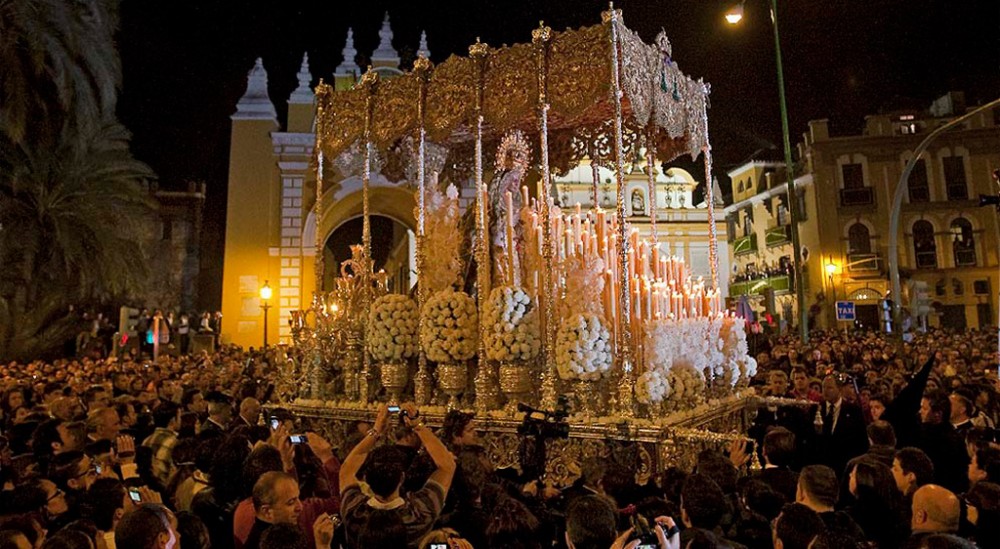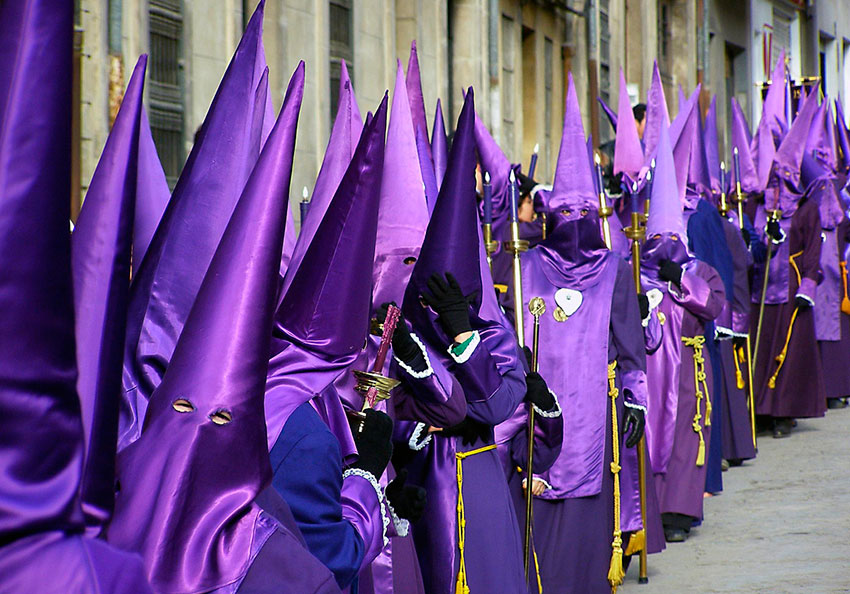Sevillian Holy Week
The Sevillian Holy Week has crossed borders and is one of the most famous religious celebrations in the world, reason why it was declared of International Tourist Interest in the year 1980.

The main protagonists of this event are the brotherhoods and confraternities. The brotherhoods are religious associations formed by laypeople and/or clergies, organically organized and whose mission is to promote Holy Week and other charitable works. Some of the confraternities are formed by people who emulate the suffering of Jesus to purge their sins.
They are the famous Nazarenes who march in processions with their faces covered and who walk barefooted and, sometimes, hit their backs with leather strips or carry heavy crosses. In the processions, they walk behind the Cruz de Guía that opens the procession.
All the confraternities must pass by the Cathedral, with the exception of those who have their headquarters in Triana, these ones pass by the church of Santa Ana. During the last decades, the number of confraternities has increased a lot, estimating that there are already more than sixty.

In addition to the members of the confraternities, there are also the Steps. These are religious images that represent different evangelical scenes which are located on a kind of platform that is decked out with all kinds of fabrics, lace, jewelry and flowers.
This platform is carried by the so-called costaleros, who are placed under a long piece of fabric so that they are not seen and follow the orders of a foreman. The costaleros are devotees who carry out this work voluntarily.
Another of the strong points of the Holy Week processions is the music, interpreted by bands that accompany the confraternities and that interpret all type of religious music. The procession often stops for some devotees (often famous flamenco figures) to interpret a saeta.
Given the large number of Holy Week processions that take place in the city, especially between Holy Thursday and Easter Sunday, if you decide to visit Seville at this time, it is best to follow one of the guides that are published each year, and in which the routes of each brotherhood appear.

You can’t miss:
La Cofradía de la Borriquita
It starts on Palm Sunday and refers to the entrance of Jesus in Jerusalem on the back of a donkey. It’s famous for the large number of children who are part of it.
La Madrugá
At night from Thursday to Friday. It opens with the Hermandad del Silencio, the oldest brotherhood, and ends with the Hermandad de los Gitanos, the most modern one.
La Hermandad de la Resurreción
It a procession on Resurrection Sunday, which ends with the Holy Week celebrations.






